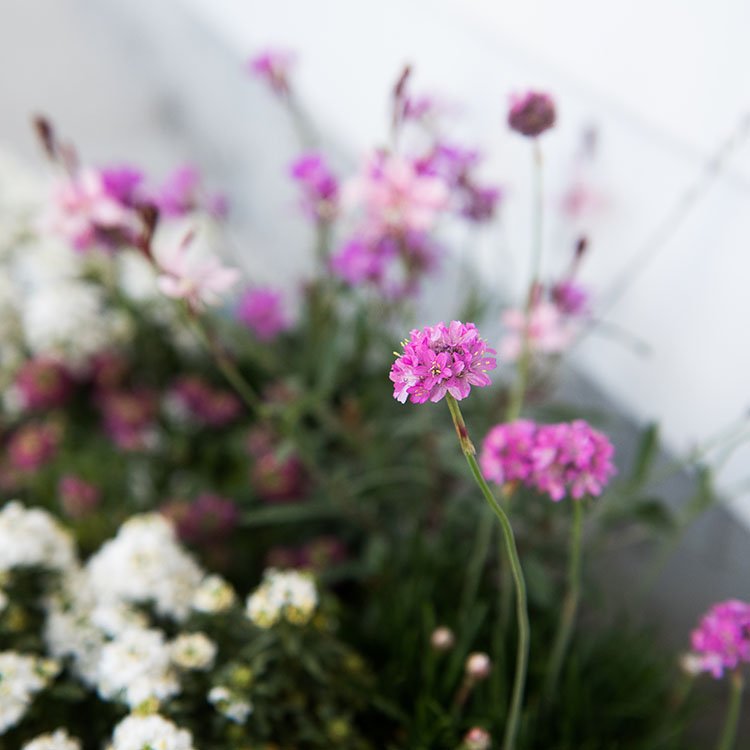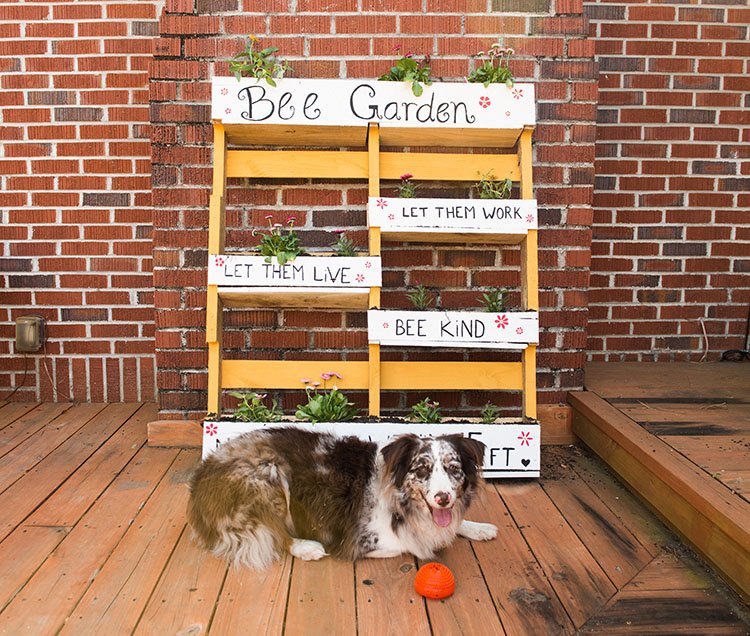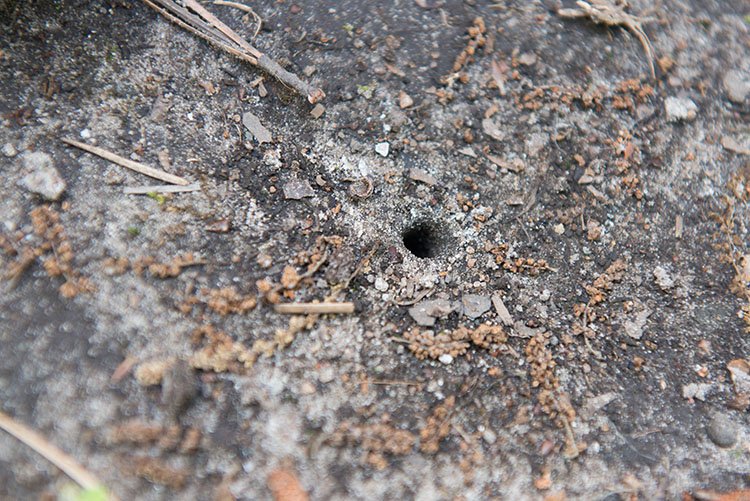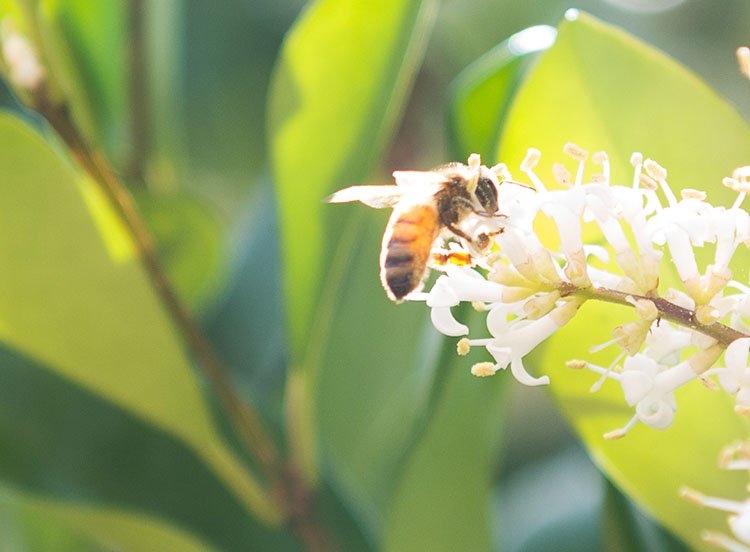Why And How To Love A Bee Garden In Your Yard
Do we really want more bees in our yards? Turns out the answer is probably yes (unless you have a serious allergy, of course). For the rest of us, bees do a LOT of hard work to keep our plants growing and food production going. Today, Reese from Compost and Cava answers questions about the bee gardens that she made and why you might want to make your own bee garden in your yard.

Raise your hand if you’ve seen Bee Movie. It’s great, right?! At least I really like it, and my boys are big fans too (including my husband).
The premise of the movie highlights the important roles bees play in the lives of our vegetation (and correspondingly our lives). The movie keeps the ominous reality of life without bees pretty light; Central Park turns gray and all the flowers die. It might not be pretty, but we could live (i.e. stay alive) without pretty flowers in Central Park.
It doesn’t really address what a serious shortage of bees would mean for our food supply, which is fine by me because it’s a kids movie. From the movie, though, my boys understood with abundant clarity that many good things die without bees.
Whether the movie was born out of the growing reality that a bee shortage could be a real problem or the timing just happened to be serendipitous (I’m guessing the former), it’s potentially becoming a reality. In recent years, bee colonies have declined significantly in the US and worldwide. It’s not entirely clear why bees are dying. Disease, pesticides, and lack of undeveloped space to thrive are common suspected causes.
A couple of years ago, the USDA released results of a study tracking bee populations, causes of reduction and more. You can read the results for yourself, if you so desire, but one of the three proposed solutions from the USDA was to “restore or enhance millions of acres of land for pollinators through combined public and private action.” While we don’t all have millions of acres to dedicate to land for pollinators, many of us could make our yards more ‘pollinator-friendly’ and create a wealth of backyards ripe for pollinator homes without much cost or effort.
Reese, from Compost and Cava, recently shared about the two bee gardens she made for her yard. She made a wooden pallet bee garden perfect for a patio or apartment and planted several plants to create a more traditional garden in her yard. While I appreciate the need for more bees, this prompted a colony of questions for me. Do I really want all those bees in my yard??!

I reached out to Reese and she offered to share her answers to a bunch of questions I had and you might have too. Read on for more about Reese’s bee gardens. She might just inspire you to create a bee garden in your yard too!
Q&A from Reese About Why and How To Love a Bee Garden in Your Yard
What made you decide to start a bee garden? I know the bee population is declining, but do you really want them in YOUR yard? Aren’t you worried about getting stung? Also, can you tell us a little bit about what type of house you live in (apartment, home, etc..) and where the bee garden is relative to your house, deck, outdoor living space, etc…?
I read a lot of really depressing books about the state of the world, and the global bee decline makes me super uncomfortable, so I decided to do what I can to help. It’s worth noting my first line of attack was actually trying to spread the word, but it turns out most people do NOT want to talk about spontaneous hive collapse at the wine bar. Who knew?! (Bringing up the global bee decline is, however, a great way to get out of unwelcome conversations with people on airplanes when you want to nap. They will all but pull the emergency hatch and jump.)
I do really want them in my yard! I live in a suburban home in Charleston, SC with an extensive, dense vegetable and herb garden in a small yard, so I welcome any and all pollinators with mad spirit fingers. Here’s the thing about bees: they’re like dudes on Tinder. Despite the hype, 90% of them just aren’t that into you. Most bees aren’t aggressive unless you’re messing with their hives or their person. So, you know, don’t do that.

I do think there’s a lot of confusion about bees in general. For instance, male carpenter bees will hover over you out of curiosity, not aggression… and male bees don’t even HAVE stingers. And “sweat bees” or halictids are actually attracted to human sweat, in a weird evolutionary quirk, but they aren’t trying to sting you. While hornets can be aggressive, they prefer overripe fruit to flowers and they eat other insects as well.
My bee gardens at my place are on the side of my deck about 30 feet from the kitchen door, and the pallet garden is right square in the middle of the deck between the kitchen door and door to the family room. I’ve had no issues with bee traffic, no accidental bees in the house, and so far even my overly curious and very active dog has come through unscathed. My boyfriend’s bee garden is on the far side of the yard against a fence.

Do the gardens attract just bumblebees or also wasps and hornets too? Do they attract carpenter bees, because those things are currently devouring my fence?! 🙂
What you attract depends very much on what you plant. Did you know in the Southeast we actually have “blueberry bees”? They’re shaped specifically for pollinating blue berries and huckleberries. There also are squash bees!
My bee gardens are attracting all sorts of smaller bees, native bees, and solitary bees. The bumble bees are currently very invested in a flowering tree on my property, as well as the patch of mustard greens I let bolt for them. The bigger bees love the little yellow flowers on mustard greens.
I think it’s important to note that there are a lot of bees that don’t look like the ones we drew as children. Just the way not all of us can look like Beyonce, not all bees get to be fluffy striped yellow beauties. There are green metallic looking bees, all black bees, teeny tiny bees, all sorts of bees!
I’ve always had carpenter bees on the property, even before I had a bee garden, and I’ve seen neither an increase or decrease. I have not seen an increase in hornets or wasps at all, and have yet to see any wasps investigating either bee garden.
You mention in your post that some bees live underground. Have you had any issues with stepping on the hives or have any tips to make sure that doesn’t happen?
I have noticed more tiny burrow holes in the ground! But a lot of the bees that are burrowing are actually solitary bees and are also non-aggressive. You really don’t see them very often, just their holes. I haven’t had any issues thus far, but also remember only the females are even capable of stinging. And frankly, while I’m not out there seeking a bee sting, I’m also not allergic to bees so I’m really much more worried about mosquito bites and gnat bites. Those are the WORST, and mosquitos can and do transmit illnesses and dangerous viruses. That is much more dangerous to my health in my personal opinion.


You used some bee garden specific seed mixes to start your garden but also some more mature plants. Are there specific types of plants you’ve found work well to attract bees, or does pretty much any type of flower work well, provided it’s suitable for the conditions of your garden (sun, shade, etc…)?
As I touched on above, different types of bees like different flowers! So if there’s a specific type of bee you want, you should do some research into that. Not all flowers are created equal, in terms of bees. They definitely have preferences and will flat out ignore flowers they don’t fancy (like marigolds).
The most obvious thing is to look for flowers with pollen. The tiny native bees that are in my garden from sun up to sun down love flowers that are clusters of tiny blooms. It’s more bang for their buck, I think.
You discuss not spraying the area, which makes sense. Are bees harmed by mosquito and tick treatments? We live in the mecca of ticks, including deer ticks, so I’m not really willing to give up getting rid of those tick treatments to help out the bees.
Bees are absolutely susceptible to mosquito sprays. We had a horrible screw up in Charleston 2 years ago where Dorchester County decided to spray Naled from airplanes without proper warning to combat potential mosquitos carrying Zika, which was a threat primarily in Florida and Texas. The pesticides killed more than 46 HIVES AND 2.5 MILLION BEES in ONE NIGHT ALONE, that we even know about. Those numbers don’t include solitary bees. It was horrible, so horrible. The bees died in clumps trying to escape the chemicals. It breaks my heart to think about it. We were all outraged.
You need to do your own research about how to protect your family from pests in your specific area and the most environmentally savvy ways to do so, but also take time to research the types of bees in your area and the times of day they’re most active. This is key.

If you have just one or two pieces of advice for a new gardener thinking about adding a bee garden, what advice would you share?
Do it. You’ll love it. My favorite thing now when I get up in the morning or come home from work is to go sit on the paved path next to my bee garden. You have to sit really, really still in my garden to see the native bees, because they’re tiny, very shy, and lightning fast. Once they get used to you sitting there, they’ll get back to carrying on about their business. Watching them flit from flower to flower makes me so happy. They wiggle their butts like a happy dance while they pollinate!









